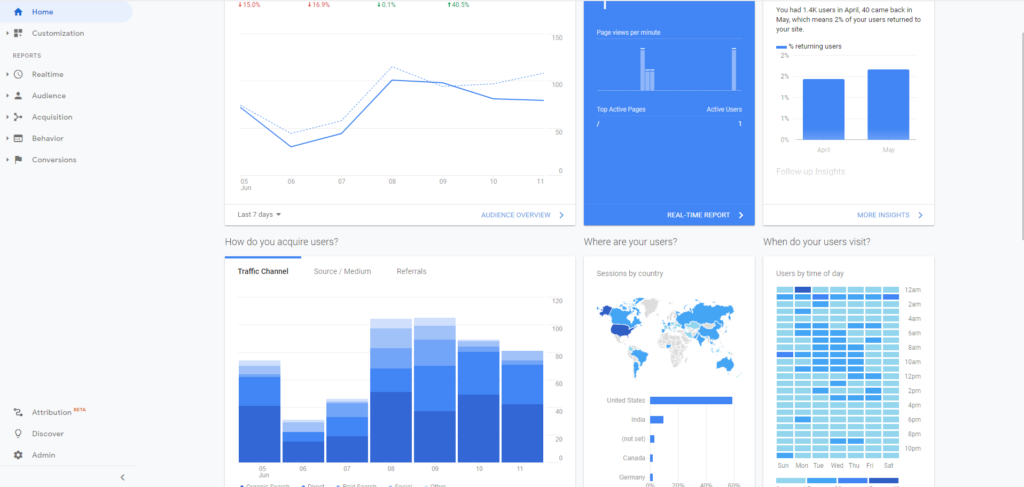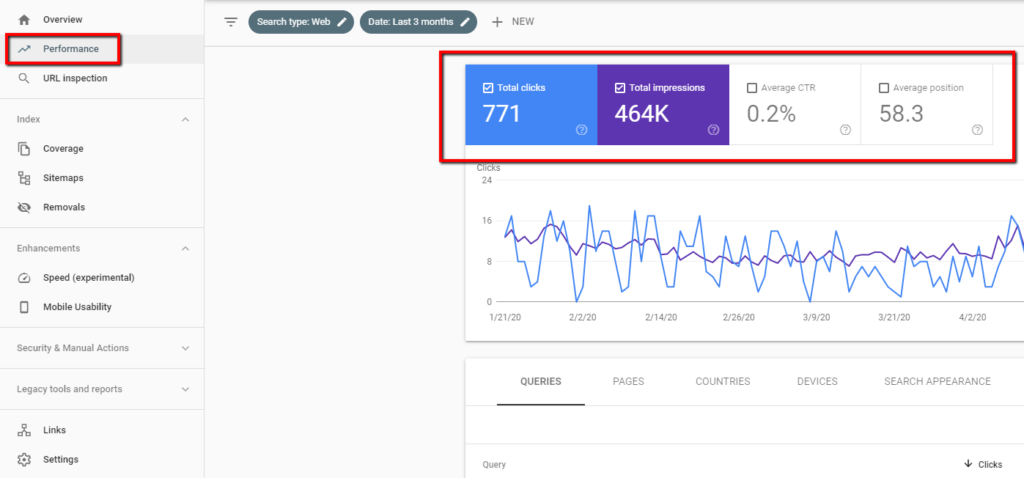SEO Return on Investment: How SEO Equals ROI
SEO and ROI are thankfully two concepts that go hand-in-hand.
While attempts to calculate your SEO’s return on investment are not always accurate, the overall ROI is much higher than you might originally assume. With so many factors playing a role in SEO’s success, the long-term ROI that this classic marketing strategy offers is actually extremely valuable. This is the main reason that SEO is still one of the most popular methods for sustained online growth!
For most businesses, determining your return on investment for paid search ads is easy, but organic SEO ROI does not need to be calculated down to the exact dollar to know that it is worthwhile.
You might be wondering how your SEO efforts are providing ROI, but many indicators prove that SEO return on investment is higher than other methods of digital marketing. Some of the most important indicators of SEO’s ROI is that it is low cost, long-lasting, and improves over time, meaning your initial investment will be worthwhile in the end.
By the end of the decade, Google had accrued over 90% of the total search market with approximately 5.7 billion searches per day! These numbers are why so many businesses see the value in trying to net part of that traffic.
In fact, the average click-through-rate for the #1 position on Google is 19.30% and that CTR drops to nearly half for the #2 spot at 10%. This means that proper search optimization is important for businesses that want to take advantage of traffic in their industry. Competitors that push them further down the page can force businesses to lose out on potential growth!
So let’s look at why SEO return on investment is so reliable.
How Much Does It Cost?
SEO investment costs may include hiring an SEO agency, an internal SEO team, content writers, or investing in SEO software depending on how you choose to get started.
On average, businesses spend around $5000 a month on SEO (from data by SparkToro), while the average Google Ads spend for some businesses can be much higher depending on their budget and their keyword strategy. SEO investments might still seem like a lot, but it is important to remember that these costs provide long-term value – which is why we constantly remind people that SEO takes time.
The good thing about this though is that despite the initial time and effort involved in SEO it can have long-term payoffs. Good SEO can build on itself as rankings grow and can pay off for years to come!
So why should you make a long-term investment in SEO? Because you would be missing out on a lot of traffic. With 51% of all website traffic coming from organic search and only 10% from paid search, you should not be sleeping on SEO.
Not only would you be missing out on that traffic, you would not be seeing the revenue associated with that organic traffic either. With over 40% of revenue being captured by organic traffic, there is a lot to gain by investing in SEO.
Which #DigitalMarketing channel has the highest ROI for your website? #SEJSurveySays
— SearchEngineJournal® (@sejournal) July 23, 2018
How SEO Equals ROI
One of the greatest benefits of organic SEO’s ROI is that it is low-cost compared to other digital marketing methods. Depending on the route you take to begin optimizing your site for organic traffic, a lot of costs are one-time investments. Unlike paid advertising, where you must constantly pay for traffic to generate leads, SEO consistently generates leads over time.
Like paid advertising, however, you cannot just invest in SEO once and expect to continue to generate leads. SEO takes requires time, continuous improvement, and implementation but at the end of the day, the costs are still significantly lower than other methods. Although this is time-consuming and for many people, time is money, it is still extremely affordable for the amount of value it provides.
In addition to being more affordable, SEO is also long-lasting. Your SEO ROI is more significant because the longer your updates are left, the more they improve over time. Once you gain traction in the SERP, it becomes easier to rank for higher traffic and higher-value keywords, which equals more business and revenue.
Because SEO is a long-term investment, it gains more value over time, but remember that a longer time frame will not help if you have a poorly developed SEO strategy or low-quality content.
A page with quality content is more likely to receive backlinks, which are among the strongest ranking factors for Google. Backlinks inform Google and users that the page is a credible source of information on that topic. Producing quality content that people will refer to can take time and effort, but as your link neighborhood tends to build over time, so will your rankings.
You might be wondering how can you increase your SEO ROI. For increasing traffic, targeting the correct audience, and improving user experience are major keys to helping you increase your revenue. Although there is much more to the SEO strategy, these are just a few tips to get you started on increasing your SEO’s return on investment down the road.
Increasing traffic is one of the most important goals of SEO, and it helps you achieve conversions. When SEO is done properly, you move up the rankings in the Google SERP to hopefully reach page 1 where more people can view your site. Organic traffic optimization is an important investment because about half of all web traffic comes from users who clicked on organic results. Basically, if you have only focused on paid advertising, you are missing out on half of the traffic you could be seeing!
Organic listings also earn more than 77% of all desktop clicks. Although increased traffic should be a goal, it is important to remember that not all traffic is equal, especially if you are not targeting the correct audience.
Targeting the correct audience is another key part of ensuring you are getting your SEO ROI. You could have thousands of users visiting your site every day, but if they are not finding what they were searching for, then you will not be seeing the conversions you want. If you are reaching the wrong audience you will also experience increased bounce rates, so to achieve optimal SEO ROI, be sure you are reaching the people who actually want to purchase your products by utilizing a search optimization strategy with expert keyword research.
If you are reaching the correct audience, you should also be experiencing increased session length- which has a positive correlation with revenues.
Improving your user experience should also be a focus when you are trying to achieve optimal SEO ROI. Because search engines track and analyze how users respond to your website, UX is important to focus on when optimizing your site. SEO should focus on giving users the best experience possible because it increases the likelihood that users will buy more, buy again, share with others, and write reviews.
These activities generate real revenue for your eCommerce business, so it is important you do not sleep on your UX. Focusing your efforts on seamless navigation, intuitive design elements, site speed, helpful product descriptions, and FAQs are just a few places you could start. You have less than 3 seconds to make an impression online, so it is important that your site loads quickly and is easy to navigate.
Calculating your SEO’s ROI

While measuring your SEO return on investment is a little tricky compared to ads, there are a few free tools you can use to track your progress.
If you have been paying any attention to your website traffic at all, you probably already have Google Analytics set up and may be using it for measuring parts of your SEO ROI already.
In addition to Analytics, Google also offers Search Console for SEO, which helps you monitor, maintain, and troubleshoot your website’s presence in the SERP. For SEO this means you can easily monitor organic traffic and optimize your rankings. This tool is a great way to track your progress alongside analytics as a whole or tracking specific URLs. For example, seeing your total clicks, impressions, and average click-through rate slowly increase – after optimizing a page – would indicate that your strategies have been successful!
The only drawback is that Search Console only provides data on index status and search performance, not data for on-site transactions and revenue. But it can still be used to inform you on the success of your SEO in other ways.

For measuring the actual revenue that your site is bringing in, you will have to set up Ecommerce Tracking in your Analytics account. Setting up tracking is as simple as adding code to your site that collects data and then reports it to Analytics.
With Ecommerce Tracking set up, you can filter to see which landing pages are bringing in organic search revenue to help you adjust your strategy and monitor the success of your efforts over time.
The benefit of Ecommerce Tracking with Google Analytics is that it gives more detailed insights than just the regular conversion data you normally get. With more eCommerce-focused metrics you can better understand how your search optimization is providing results by measuring growth in Revenue, conversion rate, and best-performing products (by SKU). In fact, Ecommerce Tracking provides these reports:
- Overview: Summary of Revenue, Ecommerce Conversion Rate, Transactions, Average Order Value and other metrics.
- Product Performance: Revenue, Purchases, Quantity, Average Price, and Average QTY by SKU and Category.
- Sales Performance: Revenue by Date.
- Transactions: Revenue, Tax, Shipping, and Quantity by Transaction ID.
- Time to Purchase: Days to Transaction and Sessions to Transaction.
Remember that SEO is a long-term investment, so your ROI will not always be seen immediately.
If you understand the long-term investment of SEO then you will appreciate the value of achieving page 1 status over the course of a few months. When it comes to measuring SEO’s ROI, there is a large gray area but with the right strategies in place, you will find value in your SEO efforts building over time.
Start improving
Learn more about getting SEO return-on-investments or how to begin the process of growing your business. Contact us for more information on ROI, or information on SEO resources designed for long-term success.
